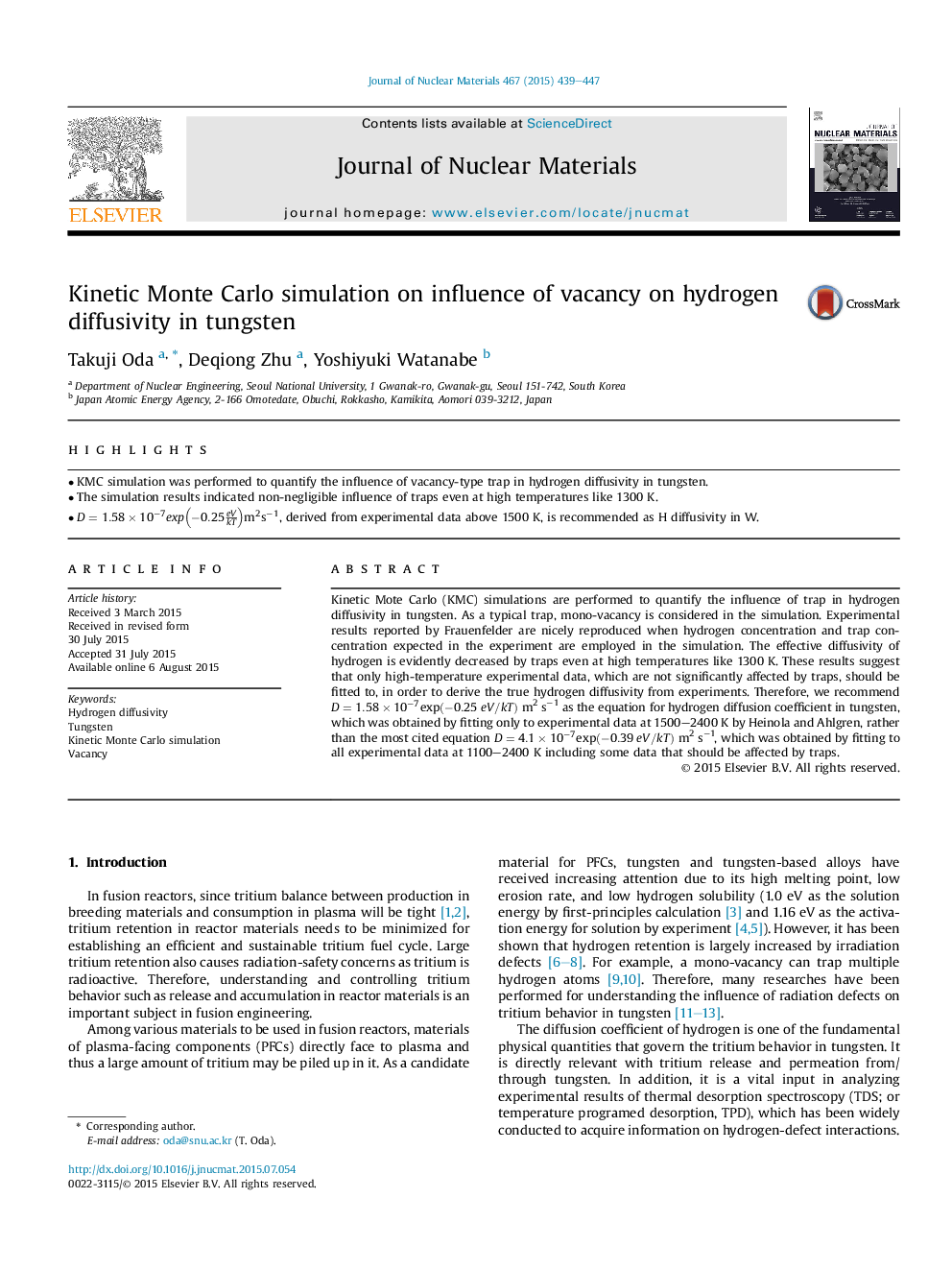| Article ID | Journal | Published Year | Pages | File Type |
|---|---|---|---|---|
| 1564908 | Journal of Nuclear Materials | 2015 | 9 Pages |
Abstract
Kinetic Mote Carlo (KMC) simulations are performed to quantify the influence of trap in hydrogen diffusivity in tungsten. As a typical trap, mono-vacancy is considered in the simulation. Experimental results reported by Frauenfelder are nicely reproduced when hydrogen concentration and trap concentration expected in the experiment are employed in the simulation. The effective diffusivity of hydrogen is evidently decreased by traps even at high temperatures like 1300Â K. These results suggest that only high-temperature experimental data, which are not significantly affected by traps, should be fitted to, in order to derive the true hydrogen diffusivity from experiments. Therefore, we recommend D=1.58Ã10â7exp(â0.25eV/kT) m2Â sâ1 as the equation for hydrogen diffusion coefficient in tungsten, which was obtained by fitting only to experimental data at 1500-2400Â K by Heinola and Ahlgren, rather than the most cited equation D=4.1Ã10â7exp(â0.39eV/kT) m2Â sâ1, which was obtained by fitting to all experimental data at 1100-2400Â K including some data that should be affected by traps.
Related Topics
Physical Sciences and Engineering
Energy
Nuclear Energy and Engineering
Authors
Takuji Oda, Deqiong Zhu, Yoshiyuki Watanabe,
